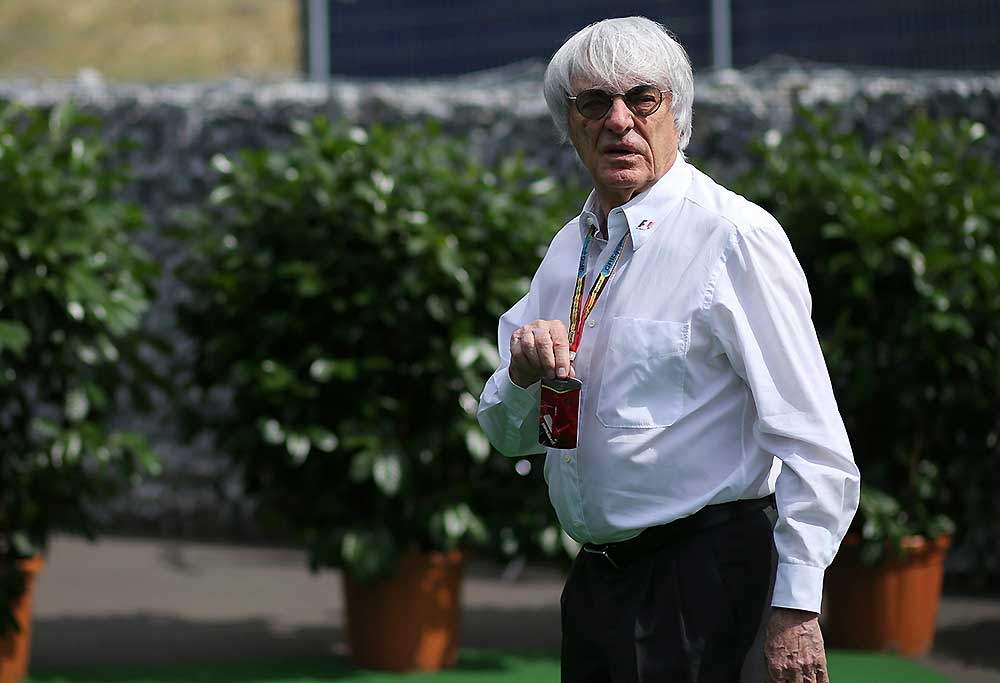'Welcome back': Reliving the last Chinese Grand Prix ahead of its much-anticipated return five years later
Five-years is a long time in motorsport, let alone the general state of the world – especially given the impact of the Covid-19 pandemic…

For all Bernard Charles Ecclestone’ foibles there are none in Formula One prepared to deliver visions for the future quite like Bernie.
“I’ve been criticised probably by everybody because I wanted to build 40-centimetre walls around the corners,” F1’s favourite 86-year-old said at the Mexican Grand Prix. “They keep saying they mustn’t go off the road. I promise they won’t.”
It’s hard to imagine Chase Carey, the supremely polished corporate operator, making such radical suggestions to overhaul driver safety.
Yes, Bernie may have been being cheeky in his request to turn all circuits into pretend street tracks, but it’s a thought bubble founded in the problem of the day – namely that not one of the world’s 22 supposedly best drivers seems able to distinguish between the racing surface and other things.
The driving on display at the United States Grand Prix, after which Bernie made his possibly Trump-inspired plan known, was laughable. In another case of the sport enforcing some rules at some times and some places only, at the Circuit of the Americas the FIA decided against regulating any of the white lines demarcating the track.
The result was drivers using the track’s copious non-punishing run-off to complete the race distance, making a mockery not only of one of Hermann Tilke’s few laudable circuits but also the very idea of a racing track.

Fast-forward to Mexico, where most drivers cast down Ecclestone’s anti-safety idea while simultaneously acknowledging circuits that punished errors were more thrilling for them to drive – “I think we can definitely make the circuits a bit more challenging for drivers,” said home crowd favourite Sergio Perez – and the story was largely unchanged. The circuit remained unregulated, and drivers took some affronting liberties with the so-called limits.
Lewis Hamilton’s brazen non-attempt to make turn one after locking his brakes with teammate Nico Rosberg less than a car length behind was the first breach, followed moments later by Rosberg’s own deliberate cutting of turn two, albeit after he was shoved off the track by Max Verstappen.
In the former example Hamilton slowed down upon rejoining the track in a successful attempt to placate the stewards, but by doing so he still avoided paying for his mistake, the likely cost of which would have been being fed into the chasing pack.
In Rosberg’s case he was taking justice into his own hands by reclaiming second after feeling he had been cheated out of it. Regardless – the driver attempted to rejoin the circuit sooner, but he opted instead to drive along the grass to emerge ahead of the Dutchman. Neither he nor Hamilton were penalised.
Verstappen was less lucky dealing with the stewards when he, in remarkably similar formation to Hamilton and Rosberg at turn one, locked up while defending against Sebastian Vettel and cut the corner to hold position. A five-second penalty was his punishment.
Two obvious problems present themselves in these and all other cases of flagrant track limits abuse. The first is that penalties are desperately inconsistent – the remedy being to make at least one of the four stewards permanent, as suggested by this column earlier in the year – and the second is that penalties, even if consistent, aren’t the answer anyway.
No-one wants results decided in the stewards room, least of all the FIA, which invariably cops partisan flack afterwards. A driving mistake should meet with punishment on the circuit, thereby becoming a thread in the race’s narrative. “Verstappen beached in podium battle” is a much more exciting headline than “Verstappen docked five seconds after race”.
Available to Formula One are two solutions. The first is to reinstate gravel as close to universally as is possible to ensure run-off areas deal punishment. Either Mercedes skating across a sea of loose stones would have cost them precious time that would have delivered a natural justice rather than Hamilton’s façade reparation.
Where gravel is not possible the preference must be to adopt Austria’s uber-aggressive kerb solution coupled with the re-entry lane used at the Montreal chicane and elsewhere.
The Red Bull Ring kerbs left few brave enough to test track limits after no fewer than four cars suffered broken suspension assemblies from straying too far. For those who attempt to drive past the kerbs altogether to cut the turn, a bollard at the far end of the run-off zone would force a driver to take the long way back onto the circuit, ensuring they cannot gain time.
Working together both solutions are easily preferable to the current system of hotchpotch penalties that do little to cleanse the bad taste from the mouths of the fans after seeing the two highest-ranked drivers in the world’s highest-profile sport treat the world championship like a session of Gran Turismo.
Failing that, there’s always the wall.
Follow @MichaelLamonato on Twitter